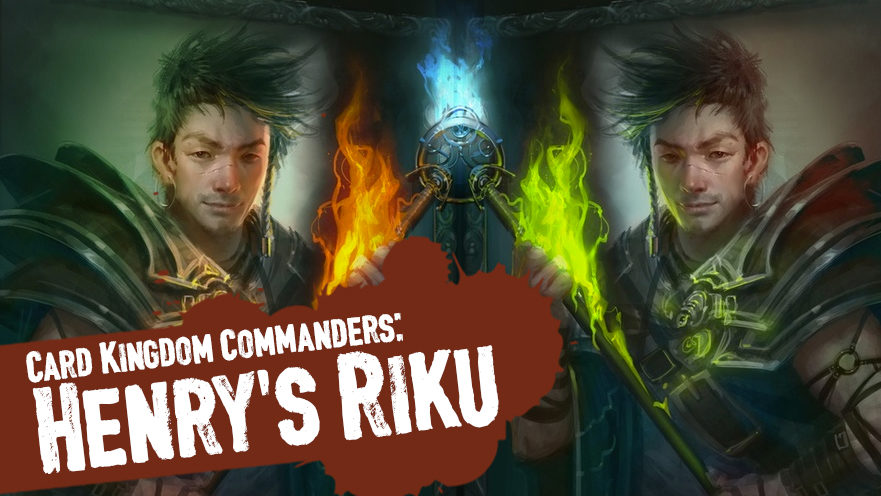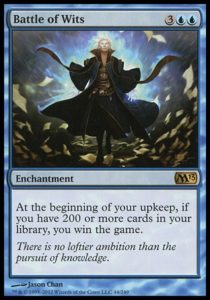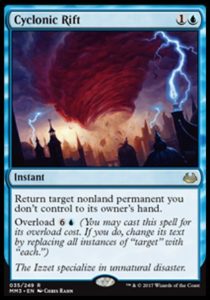Say hello to our newest series! Whether it’s Magic that drew us to Card Kingdom, or a job that sparked a passion for the game, it’s no surprise most of us end up playing where we work. Card Kingdom Commanders is an opportunity to sit down with the people in the company and talk about the decks that embody who they are as people and players. Across the company are strong, tight-knit playgroups, spawning some of the strangest brews in the Multiverse— and we’d like to share our awesome decks (and all their stories) with you!
MEET HENRY ELIOT
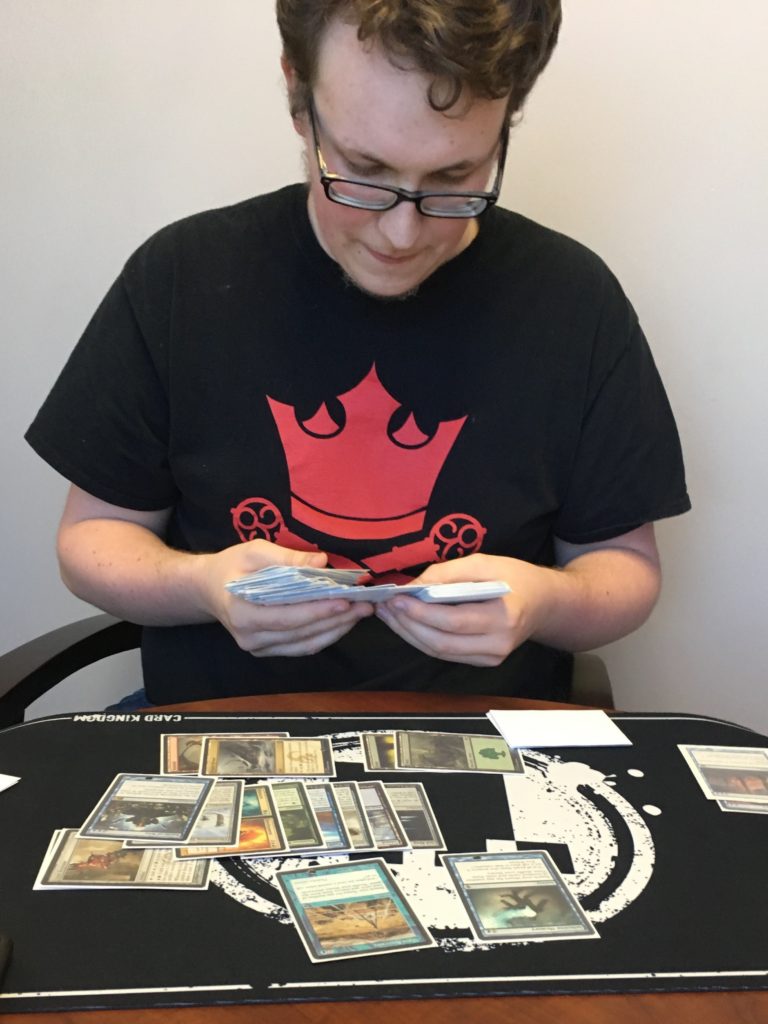
Henry shows what Riku can do. Photo credit: Aaron Durbin
Henry plays a lot of Magic. When he’s not jamming Modern Cheeri0s or his Commander deck du jour, Henry works in Overstock, assembling Guild Chests and Battle Decks, and cracking Commander product to keep us flush with copies of Vial Smasher and other popular titles.
I met Henry a little less than a year ago. Though I don’t remember the specifics, we clicked instantly. Both of us are fascinated by the idea that deck-building is more art than science, more self-expression than subjective valuations, and that Commander is the only format that facilitates our collective definition of “fun.” We’ve been brainstorming weird decks ever since.
Part mad scientist, part comedian, Henry’s approach to deck-building has earned him a reputation around the office as a strong, clever player. His ability to fearlessly craft and pilot strange, impractical decks with actual, winning plans demonstrates a challenge to both his opponents as well as the “spirit of the format.” Whether his Commander is Uril, the Miststalker, or Hope of Ghirapur, every game you play against Henry is mysterious, silly, and ultimately satisfying. He builds casually and plays competitively, but his true goal is to, as he puts it, “Keep Commander real stupid.”
MEET HENRY’S DECK…AND ITS 259-CARD SIDEBOARD
Can you win a game of Commander with Battle of Wits?
This was the question Henry was determined to find an answer. A self-proclaimed “hater” of combat, this Riku build began with Henry’s love for cards with alternate win conditions. Near-Death Experience, Darksteel Reactor, and Helix Pinnacle are cards that tickled his inner Johnny, challenging him to solve their puzzle-like requirements before his opponent(s) realize what’s going on.
Henry, however, found the power level of these cards were too extreme relative to Commander. In general, they were self-defeating; too linear or inflexible for his liking. It wasn’t challenging to get infinite mana for Helix Pinnacle, or double Darksteel Reactor counters, and the lists for Near-Death Experience or Azor’s Elocutors were too narrow and problematic.
But even though we can’t begin the game with 200-card libraries, much less a sideboard, a Battle of Wits Commander deck is too intriguing and exciting for people to be sticklers for the rules.
HOW DOES IT PLAY?
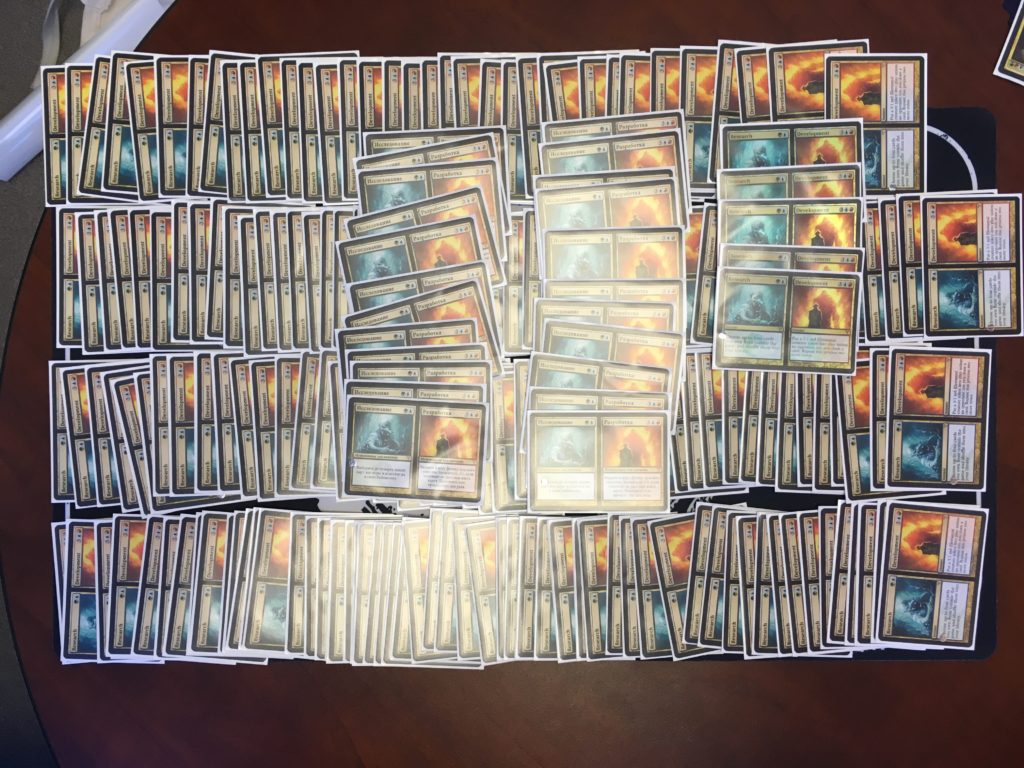
That’s a LOT of Research… and Development. Photo credit: Aaron Durbin
Although the deck is very difficult to understand at first, it’s not without reward. As Henry puts it, “The most challenging part is not the Battle of Wits combo, but learning to play a game of Magic as you put it all together.”
The combo is slow, but simple:
1) Find Research-Development, Thrumming Stone, and Battle of Wits via tutors and card draw.
2) Remove all your cards from your library via Selective Memory + Mana Severance or Leveler.
3) Cast Thrumming Stone and Battle of Wits.
4) Cast Research-Development. From this point, every card in your deck becomes four more copies of Research-Development, which takes all the copies from your sideboard.
5) Stay alive until next upkeep.
Through multiplayer politicking and combo-while-you-combo synergies, both the Commander environment and Henry’s deck choices make the plan possible. The deck is slow and generally not the first to threaten the table, so Henry can make informed choices with his tutors as he navigates the board.
The board state dynamics can get a bit complicated, and Henry often has some challenging decision trees to manage. Most of these choices are fundamental Magic decisions, like, “Do I tutor for the combo piece, or removal?” but they’re not always intuitive. Henry’s often anticipating a board at least one or two turns ahead of his current turn, which makes advancing the game vs. advancing his winning strategy a fun, stimulating balancing act.
WHAT DOES IT PLAY?
What I most admire about the deck is not just the combo, but how all the parts and pieces work towards buying Henry chances and turns to perform his great trick. Typical Riku decks have tendencies to copy creatures for the sake of pure value. Here, the spin is necessity, or the notion that the Commander is a powerful, non-essential support card that can come in and accomplish smaller goals that are vital to his plan.
For all the lofty, Magical-Christmas-Land theory that happens with our combo, this part strikes a nice balance. Typical Riku pals like Keiga, the Tide Star and Eternal Witness help handle troublesome Commanders and recur deck necessities like Cyclonic Rift and Evacuation, or the occasional removal of a necessary combo piece. Even copying the less-threatening Boartusk Liege has proven to be helpful, pumping Riku and putting a few big creatures on the battlefield for very little.
Some of the better troubleshooting cards revolve around Isochron Scepter, one of Henry’s favorites. Noxious Revival is his favorite card to imprint, simply because having more copies of the same spells helps give the deck momentum, but Brainstorm and Cyclonic Rift are solid, too.
Selective Memory and Mana Severance are probably the most creative choices for the deck, and not just when Henry plays them together. When he’s faced with problems, it’s not uncommon to see Henry use Selective Memory or Mana Severance as an “anti-tutor,” removing all the cards he doesn’t want in his deck to find the things that matter.
WHAT’S NEXT FOR BATTLE OF WITS?
I asked Henry what he thought he would change for his deck moving forward. He shocked me when he said he was considering a Yidris version, but it made sense. Cascade, extra tutor support, and Secret Salvage seem fun.
He also recommended several different options for people looking to play Battle but make it their own, like Kynaios and Tiro, or any other R/U/G/X Partner combination like Vial Smasher and Kydele.
Ultimately, the Battle of Wits combo is a transferable shell, and something that any player inspired to make this deck can fiddle around with and find their own version. Often, I get caught up in how impressive and integral I feel this deck is to Henry, but he set me straight. It doesn’t have to be just his! Classic Henry.
Header design: Chris Rowlands
Header art: “Riku of Two Reflections” by Izzy

For most of his Magic-playing life, Aaron has been playing and writing about Commander. One of the few mono-colored players in a gold-bordered world, Aaron enjoys the challenges of creating meaningful, memorable games, as well as the excitement that comes with engaging underrated cards as he explores the format’s uncharted territory. A disciplined deckbuilder with over 200 lists to his name, Aaron has spent the past several years creating content about his favorite format.

